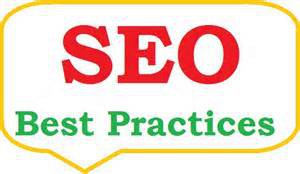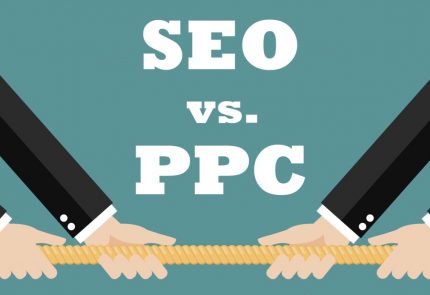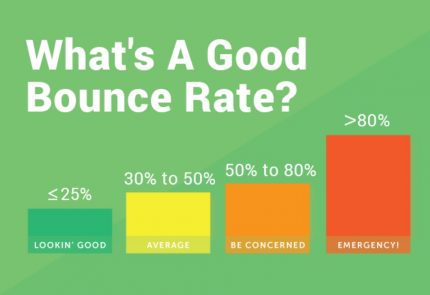 Here at SEO Sydney Experts we have optimised many eCommerce websites and if there is one thing that I have learn’t is that you need to be consistent when it comes to your SEO best practice. So for all those entrepreneurs out there looking to make a dollar from having an eCommerce website I thought I would share some valuable SEO tips. Obviously if you are looking at making a go of it online, I would strongly suggest that you use the services of a professional SEO agency like us.
Here at SEO Sydney Experts we have optimised many eCommerce websites and if there is one thing that I have learn’t is that you need to be consistent when it comes to your SEO best practice. So for all those entrepreneurs out there looking to make a dollar from having an eCommerce website I thought I would share some valuable SEO tips. Obviously if you are looking at making a go of it online, I would strongly suggest that you use the services of a professional SEO agency like us.
ECOMMERCE SEO TIPS.
1) Your website must have a user-friendly interface
A user-friendly interface is really the most important part of the web process. The user or customer must be able to easily navigate the website and easily find what they are looking for. Make it hard for them and you will soon see the results. It’s called shopping cart abandonment and you do not want this to happen. If you make the web journey a pleasure, the user will be more likely to hang around and eventually buy from you.
To make your website user-friendly, you have to design and build your product pages cleverly. The user must be able to navigate from the home page easily to all the product pages within a 2 step process. For SEO purposes the SEO authority (or what is commonly referred to as link juice) needs to pass from the home page to the product pages.
You should be organising your product pages according to what your customers are expecting to see and ideally your categories of products need to be organised according to their level of importance. That is, make sure your best selling items are higher up the category list and not buried deep within the site. Maybe a ‘hot button’ on the home page highlighting these best sellers is a good idea.
Adding breadcrumbs is also a good way to track the customers journey and will allow users to easily find where they are on the site. Also you really need to link pages internally, where you will connect relevant pages. This is great for SEO as it pushes authority between the pages.
The best thing that you can do is keep people on your website and this can only be achieved through better web design interface – to make this happen you need to work with a SEO agency that has a strong understanding of the web and UX. Granted, this is not easy to find but if you call 1800 916 191, you will be heading in the right direction.
2) Start with a comprehensive content marketing strategy
To have an industries best eCommerce website, you must be updating it regularly with fresh content, news, information about your products and this can only be done through employing a content marketing strategy. Fresh, new content on your blog is a great way to keep users really interested in your site and it also keeps the search engines coming back you your site for reindexing.
If you are going to be perceived as a market leader then you must be dominating your niche online and this can only be achieved through a content strategy. PLUS the more you put out there the more likelihood the chances your content will get shared, liked and followed, which in turn increases your online visibility which in turn creates more potential customers. The more blogs you post the more reach you have. Google will index all blog posts and rank it according to how relevant they are. If you are able to write something really interesting and useful, Google will prioritise this.
I always tell my clients that it’s far better to publish 1 really outstanding article or blog per month than 4 rushed blogs will little or no value. Spend a bit of time on this side of your business and you will see the rewards.
Don’t be afraid to link to external websites from your blog. If there are other sites within your industry that you feel your customers might find interesting you can point them in that direction. Again, take care when doing this as you do not want to point them to spammy sites as this can and probably will incur the wrath of Google with a penalty.
3) Error Free Website
When looking at your SEO you must pay attention to all your ‘on page’ factors of your eCommerce site. If you site is not 100% in pristine condition and squeakie clean, then it will hamper all future SEO efforts. You can go into your webmaster tools and run some diagnostic tests to ensure that there are no broken links, missing sitemaps, or faulty redirects. You should also look at each and every page title and description to ensure that they are relevant, unique and not spammy.
If your site has many ‘on page’ errors then you can kiss goodbye any chance of a seriously good Google ranking. Plus having issues with titles may impact the user experience and contribute to pages being indexed incorrectly. Overall it’s an absolute nightmare. So get it right from the beginning way before you even think about launching the site.
A real conversion and SEO killer is page load times and site speeds. Make sure you run tests through tools like ‘ Google PageSpeed Insights to work out any bugs that are impacting your websites load times. Fix these immediately and you should see customer retention rates and SEO rankings improve dramatically. Remember 35% of users will leave your site if it doesn’t load within a couple of seconds.
Think about it. How annoyed do you feel when you have to sit and wait for a site to load.
4) Duplicate content
Put simply, Google likes unique content and there is no exception when it comes to product descriptions. Reason being, Google needs new content to index and if it has trouble doing this due to duplicate product descriptions your website will suffer. There is, if your website is product based and you are importing products from overseas to just copy and paste all the descriptions. This is a massive mistake and you need to really be on board with this. If you create unique and fresh content for each product this will help in your SEO rankings much better than a relaxed attitude about this. I know this is painful, especially when you have 1000’s of products but this is the reality of the online space, especially Google.
An example of how duplicate content affected a website was when we were doing the SEO for a villa booking agency and the content for each villa was duplicated from another site. Until new content was written for each villa the rankings were going no where. It did take a couple of months but the results speak for themselves. As soon as Google indexed the new copy, BOOM – the rankings shot right up.
5) Product and client Reviews
64% of online browsers will buy products after reading reviews. They are a seriously good marketing tool especially if the reviews are really good. All eCommerce websites should have some type of review system in there if the site is going to generate more sales. In regards to SEO, reviews add more fresh, unique content and this keeps Google coming back for more. Make sure you ask customers for their feedback after using the product. Once you have this post it immediately to the site.
6) Responsive web design
45% of all Ecommerce purchases in Australia take place on a mobile phone. If you think that’s a huge number, get ready for more as these numbers are set to rise exponentially. Everyone is on their phone and if your website is not optimised for this market then this is a seriously bad sign. And to add to that Google is now giving responsive websites priority over those that are not in their SERP’s. Ideally you want the transition from desktop to tablet to mobile to be absolutely seamless with no features or important information left out. This is crucial especially in the eComm environment.
Put yourself in the consumers shoes. If they are browsing your site on their phone and the buying process is difficult, they will simply go elsewhere. There are too many options online and it’s far too competitive to ignore these really high mobile statistics.
7) Social Media Marketing
This is a no brainer. You need to have all the ‘must haves’ social media platform icons on your website and you MUST be active in these spaces. If you have a great product users will share them online through their Facebook pages and this in turn will push your brand online without you having to do much. In this era you must be actively engaging your audience at every opportunity and social media provides the perfect space. In so far as SEO is concerned there is no direct correlation between being popular on Facebook, Twitter and having a page 1 position. But, for positioning your brand in front of a tech and internet savvy audience this is now a marketing must. If you don’t have time for this then give it to a specialists like us that can handle both SEO, digital marketing and social media.
8) Locally based SEO
If your Ecommerce website also has a shopfront make sure you do register with Google business and submit your listing to Google maps. Include as much information as you can and try to get credible, proper reviews. This will push your rankings further up the maps area. On your contact page of the website, include your full physical address and if there are multiple addresses include these as well. In addition to your SEO efforts add local citations from well- known local directories. These will add to the trust authority with Google and over time will have a positive effect on your maps listings as well as local organic rankings.
There are so many different elements and variables that go into creating the best possible eCommerce website that will rank on Google. I have only listed a few but in my opinion based on what I see and hear from other businesses, it’s really best to leave the SEO and technical stuff to the professionals. There are far too many disaster stories from those that try and have a go at it alone. If you would like to get any other information on how to push your brand and website online, get in touch with our Sydney based team today.



